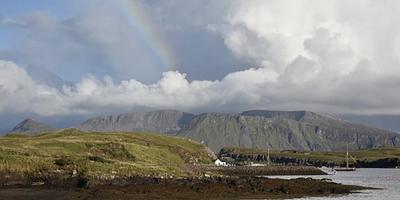
Exploring the Small Isles
By Udara Nagodavithana
The small isles are a volcanic archipelago sitting to the west of the Scottish mainland. Our adventure starts with the Isle of Eigg: 61 million years ago eruptions of basaltic lavas built up the island in many layers; the terraced landscapes, home to soaring birds of prey, formed over time as a result of weathering and glacial action. These are all bits of learning from the island's museum, which is nestled to the side of the track that runs right the way through the middle of the island. We spotted it as we took a break from cycling. As two inexperienced cyclists the hills were unforgiving and we welcomed the excuse to stop halfway. The museum houses an impressive collection of the island's history, especially for such a small space. We were educated on how the archipelago formed, the birds and sea mammals that surround the island today, and an overview of human settlement on Eigg.
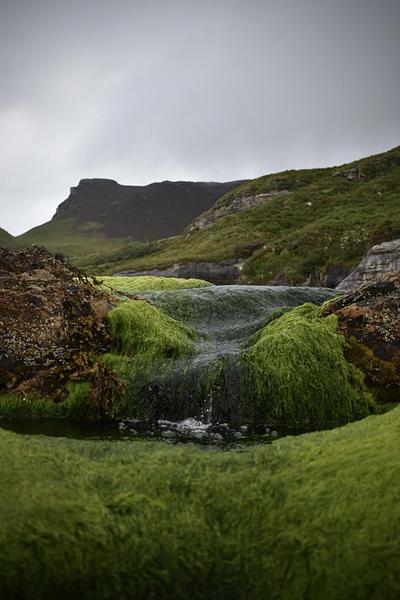
When we reached the Singing Sands we spotted several stonechats darting back and forth through the vegetation that lined the walk down to the beach. The green sea moss atop the rocks immediately enthralled me and I ran to examine it, forgetting all about the birds I was supposed to ID for the purposes of this blog. However, we were lucky enough to catch sight of a white-tailed eagle soaring above us as we said farewell to to this stunning area.
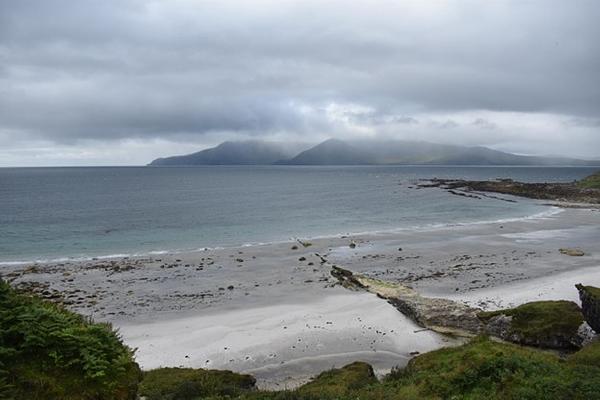
We caught sight of the Isle of Muck as we made our way to Rum – the next island on our three-isle journey. Porpoises swam close by us and, in the distance, we caught a glimpse of a pod of orcas. My keen bird watching friends would pass me the binoculars as they spotted a few arctic terns making their way back to their nests – a characteristically white, petite seabird with a black cap. Manx shearwaters, with their slim wings, sheared above the water after a few rapid flaps. Elegantly taking the wind in their stride, they made flying look effortless.
The Isle of Rum is interestingly home to a few breeding pairs of ringed plover that we spotted to the far North, in Kilmory. The ringed plover has a characteristic black band around its neck with orange legs – an easy spot even for an amateur birder. The beach was brimming with seabirds, from the commonly sighted oystercatchers and kittiwakes to the cormorants found perched on a rock a distance away from the shore. Rum is home to a plethora of bird life, as evidenced by the many species spotted with only a day on the island.
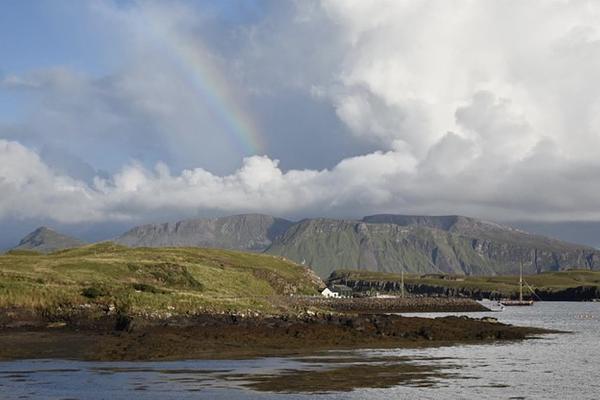
By the time we made it to the Isle of Canna, we could certainly call ourselves Calmac enthusiasts. To our despair, when we landed, we were told that we had missed the puffins by a week. Puffins come to Canna to breed and are best viewed between April and July. In 2007, a rat eradication project on the island proved successful and as a result a small number of manx shearwaters are now nesting there. Although manx shearwaters aren't seen in the day, on our walk over to the stacks we spotted plenty of guillemots, eider ducks and two grey seals.
Both the Isle of Rum and Canna are protected by the Small Isles Marine Protected Area (MPA) and, as I took a snorkel in the waters, I was witness to the thriving nursery habitats for brown crab and several species of fish (disclaimer: please ensure to take any insecticide off before entering the water and to only use reef safe sunscreens). The seaweeds were so ambundant that I kept getting entangled in Sea Lace (Chorda filum). The fronds would pull me back with the tide as I tried to get a better view of the crabs scurrying about in the lush seagrass meadows. The currents kept a steady flow of warm water going long enough for me to survey the area to my heart's content.
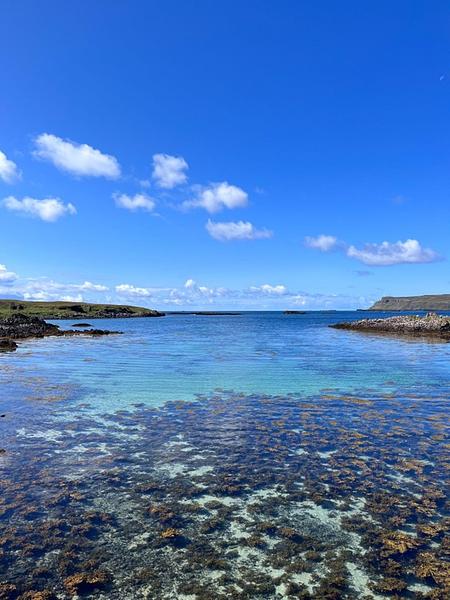
The Small Isles are a magical corner of Scotland. I would highly encourage anyone craving a quiet retreat to visit. When you do visit these islands I hope you will show them the same respect and care that the islanders do.
- Header and Thumbnail (c) Udara Nagodavithana
